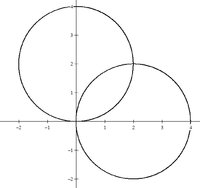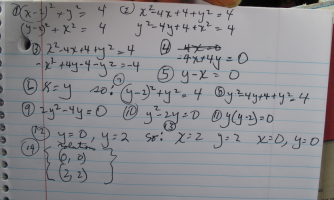allegansveritatem
Full Member
- Joined
- Jan 10, 2018
- Messages
- 962
I was trying today to find the intersection of two circles by solving the system of their equations. I had already found the point, (2,2), but I wanted to see if I could get the same result by the systems of equation technique. Here is what I did:

I did this again and again and couldn't get it to work. What am I doing wrong here?

I did this again and again and couldn't get it to work. What am I doing wrong here?


